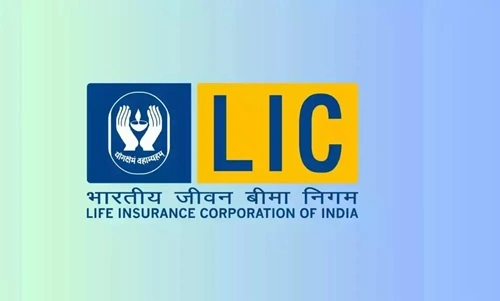As per 2025, Life Insurance Corporation of India (LIC), the nation’s largest insurer, reported a 17% year-over-year increase in net profit for the quarter ending December 31, 2024, reaching ₹11,056 crore. This growth was primarily driven by a 30% reduction in employee-related expenses.
However, net premium income declined by 9% to ₹1.07 trillion, influenced by a 24% drop in single premiums and a 14% decrease in first-year premium collections.
Strategically, LIC is focusing on high-margin non-participating policies and is considering acquiring a majority stake in a standalone health insurance company to diversify its portfolio.
The solvency ratio improved to 2.02 from 1.93 a year earlier, indicating enhanced financial stability.
Despite these developments, LIC faces challenges due to regulatory changes affecting policy surrender charges, which have impacted policy sales.
Overall, LIC is navigating a complex landscape, balancing profitability with strategic initiatives to maintain its market leadership and here on this page we will discuss in-depth about SWOT Analysis of Life Insurance Corporation of India (LIC).
Strengths
- Market Leadership
LIC dominates the Indian life insurance sector, holding a 62% market share in first-year premiums as of FY24. This strong position allows LIC to leverage its brand recognition and extensive reach.
(Source: Economic Times) - Extensive Distribution Network
LIC operates a vast network of over 1.3 million agents and 2,000 branch offices nationwide. This unparalleled reach ensures the company can tap into urban and rural markets effectively, maintaining a strong connection with its customer base. - Government Backing
As a state-owned enterprise, LIC enjoys implicit government support, which bolsters investor confidence and provides financial stability. The backing helps LIC sustain trust and manage policyholder obligations even during economic uncertainties. - Comprehensive Product Portfolio
LIC offers diverse insurance products, ranging from term insurance and endowment plans to retirement and health insurance. This enables the company to cater to varied customer needs, enhancing its market appeal. - Strong Financial Resilience
With a massive asset base exceeding ₹43 trillion in 2024, LIC remains one of the most financially robust insurance companies globally. It also maintains a solvency ratio of over 1.87, well above the regulatory minimum of 1.50.
(Source: IRDAI Annual Report)

Weaknesses
- Dependence on Traditional Policies
LIC’s portfolio is heavily skewed towards traditional insurance products like endowment and money-back plans, which often have lower returns compared to market-linked insurance plans (ULIPs). This could deter younger, investment-savvy customers. - Low Penetration in Urban High-Income Segments
Despite its dominance, LIC faces challenges in capturing a significant share of high-income urban customers who prefer private insurers offering customized products and digital-first services. - Operational Inefficiencies
LIC’s reliance on a legacy operational framework leads to higher costs and slower turnaround times compared to private sector peers, which are leveraging technology to enhance efficiency. - Limited Global Presence
LIC’s international footprint remains minimal, contributing less than 2% to its overall revenue. This limits its ability to capitalize on growth opportunities in emerging and developed markets.
Opportunities
- Growing Insurance Awareness
Increasing financial literacy and awareness of the importance of insurance in India provide LIC with an opportunity to expand its customer base, especially in underpenetrated rural areas. - Digital Transformation
LIC’s ongoing digitalization drive, including the launch of its mobile app and online policy services, positions it to attract tech-savvy customers and compete with private insurers who emphasize convenience and innovation. - Expanding Pension and Retirement Solutions
With India’s aging population expected to grow, demand for retirement and pension plans is rising. LIC’s existing annuity products can be further enhanced to capture this growing segment. - Collaborations and Partnerships
Strategic collaborations with fintech companies and partnerships with banks can improve LIC’s distribution capabilities and enhance customer acquisition, particularly in younger demographics. - Global Expansion
Exploring international markets, particularly in regions with a high Indian diaspora, could diversify revenue streams and mitigate risks associated with domestic market saturation.
Threats
- Intensifying Competition
Private players like HDFC Life, SBI Life, and ICICI Prudential are increasingly capturing market share by offering innovative, digitally-enabled products. This competition can pressure LIC’s growth and profitability. - Regulatory Challenges
Changes in regulations, such as caps on premium rates or requirements to allocate a greater share of business to rural and social sectors, could impact profitability.
(Source: IRDAI Updates) - Economic Volatility
Unpredictable macroeconomic conditions, including inflation and interest rate fluctuations, could affect LIC’s investment income and policyholder returns. - Cybersecurity Risks
As LIC moves towards digital platforms, the risk of cyberattacks and data breaches increases. A major breach could damage the company’s reputation and erode customer trust. - Evolving Consumer Preferences
Young consumers increasingly prefer simplified, flexible insurance products offered by tech-driven competitors. LIC must adapt quickly to these changing preferences to remain relevant.
Conclusion
As of 2025, LIC continues to dominate the Indian life insurance market, leveraging its strong brand equity, vast distribution network, and financial stability. However, challenges such as competition, operational inefficiencies, and limited digital adoption present hurdles that need to be addressed.
To sustain its leadership position, LIC must embrace digital transformation, diversify its product portfolio to cater to younger customers, and expand globally. By capitalizing on growing insurance awareness and the rising demand for retirement solutions, LIC can secure its position as a trusted insurer while ensuring growth in a competitive landscape. Proactively addressing threats like cybersecurity risks and adapting to regulatory changes will further strengthen its resilience in the evolving insurance industry.
Anantha Nageswaran is the chief editor and writer at TheBusinessBlaze.com. He specialises in business, finance, insurance, loan investment topics. With a strong background in business-finance and a passion for demystifying complex concepts, Anantha brings a unique perspective to his writing.


